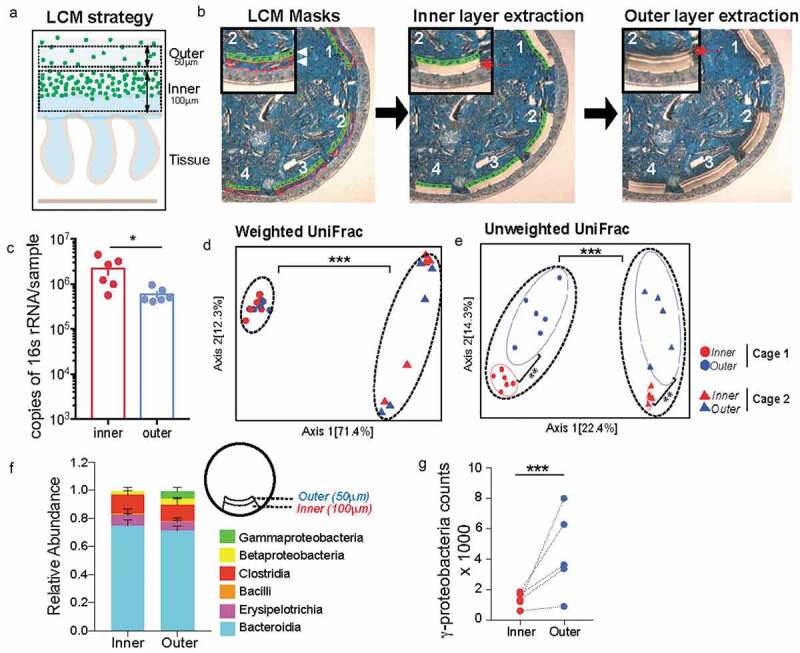Figure 2.

Mucus-associated dense community is compositionally distinct from adjoining sparse community
A. Diagram of laser capture microdissection (LCM) strategy for independently obtaining the inner dense community (1st 100-μm) and outer sparse community (subsequent 50-μm) of the mucosal layer for 16S rRNA sequencing. B. Images of colonic cross-sections showing LCM masks of inner and outer communities followed by the independent extraction of each region separately in order to analyze regions separately. C. Copy number of 16S rRNA per sample from inner and outer communities showing enough material is obtained for sequencing, with more copies in the inner community (N = 6 mice, SD). *p < .05 paired t-test.D. Principal coordinates of analysis (PCoA) plots. Left: Weighted UniFrac shows most significant difference in microbial communities comes from cage effect, with no difference in location. Right: Unweighted UniFrac shows most significant difference in microbial communities comes from cage effect, but also the inner and outer communities are significantly different (N = 11 mice). **p < .01, ***p < .001 PERMANOVA. E. Class-level relative abundance of inner and outer communities (N = 5 mice from Cage 2, SEM).F. Differential abundance of class Gammaproteobacteria calculated using DESeq2, showing significantly more Gammaproteobacteria in the outer community (N = 5 mice from Cage 2, Log2 Fold Change = 4.87, padj = 1.39 x 10−7). ***p < .001.
